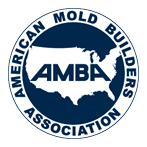By: Brent Borgerson
April 18, 2011
Injection molding frequently involves problem solving. Many of the problems regularly faced by a molder are quality related problems including: short shots, flash, dimensional issues, warp, and cosmetic concerns. The molder is also frequently confronted with the need to reduce cycle times and/or increase yields.
Most problem solving in injection molding falls into two broad categories: structured (formal) and unstructured (informal). In a series of blog entries, we will discuss various problem solving tools used in injection molding.
First, let’s examine unstructured/informal problem solving.
Experience
The majority of everyday problem solving in molding relies heavily on experience as the problem solving tool. A good portion of this is the experience of the individual molder. There is an old molding tale that tells of “The World’s Greatest Molder” being interviewed for a trade journal. He was asked what the key to his success as a molder was. Being a man of few words, he replied, “Not making mistakes.” He was then asked how he avoided making mistakes. He answered, “Experience.” He was further interrogated as to how he obtained experience. “Making mistakes,” he replied.
Yes, one of the most often used problem solving tools in injection molding is based upon making mistakes… but learning from those mistakes!
The cumulative experience of a truly cross-functional team is powerful as both an informal and formal problem solving tool. When tackling a complex molding problem, it is a good practice to involve personnel from molding, tooling, design, and quality. This can be done in an informal shop floor setting or in a conference room. A group of technical people getting together to share their experiences in solving a problem is a technique called “brainstorming” which leads into our next blog discussion of structured or formal problem solving tools.
Written by:
Brent Borgerson
Senior Process Engineer (Older Molder)
Matrix Tooling Inc. /Matrix Plastic Products
_horizontal_white_536x129.png)

